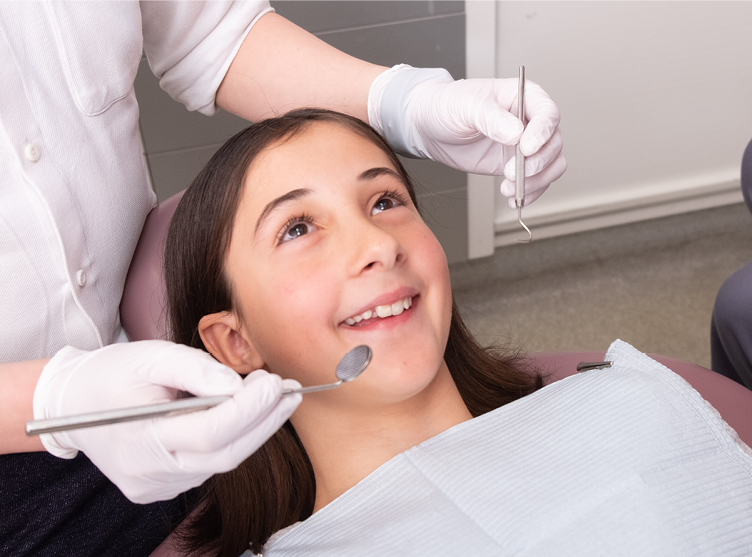Our Legacy Orthodontics Diaries
Our Legacy Orthodontics Diaries
Blog Article
6 Easy Facts About Legacy Orthodontics Described
Table of ContentsHow Legacy Orthodontics can Save You Time, Stress, and Money.The smart Trick of Legacy Orthodontics That Nobody is Talking AboutMore About Legacy OrthodonticsLegacy Orthodontics for BeginnersThe smart Trick of Legacy Orthodontics That Nobody is Talking About
In addition, we supply flexible treatment timetables, flexible settlement alternatives and an enjoyable, enjoyable experience.An orthodontist is a dental professional trained to detect, stop, and treat teeth and jaw abnormalities. They correct existing problems and are educated to recognize troubles that may establish in the future. Orthodontists function with individuals of every ages, from youngsters to adults. Individuals often link an excellent smile with healthiness.
Malocclusion, or misaligned teeth, can bring about dental concerns, including dental caries, gum illness, and tough or agonizing eating. But not every person is birthed with straight teeth. If you have a negative bite or large areas in between your teeth, you might want to seek advice from a dental practitioner specializing in orthodontic care.
4 Simple Techniques For Legacy Orthodontics
( Image Credit Score: DigitalVision/Getty Images) Orthodontists utilize dealt with and detachable oral tools, like braces, retainers, and bands, to transform the setting of teeth in your mouth. Orthodontic treatment is for oral abnormalities, consisting of: Jagged teethBite troubles, like an overbite or an underbiteCrowded teeth or teeth that are as well far apartJaw misalignmentThe goal of orthodontic therapy is to enhance your bite.
A healthy and balanced bite guarantees you can eat, eat, and speak appropriately. While you could think of orthodontists as mostly for youngsters or young adults that require braces, they can remedy dental problems at any age. Orthodontists attend college, dental institution, and orthodontic institution. After graduation, they spend 2 or 3 years in an orthodontic residency program.
All orthodontists are dental practitioners, however not all dentists are orthodontists. Orthodontic residency programs provide extensive, concentrated direction for oral professionals. They concentrate on two areas: How to correctly and securely relocate teeth How to properly lead advancement in the teeth, jaw, and faceOnce an orthodontist has finished training, they have the choice to become board licensed.
7 Easy Facts About Legacy Orthodontics Explained
Misalignment, or malocclusion, is the most common factor people see an orthodontist. It is genetic and is the result of size distinctions in between the upper and lower jaw or between the jaw and teeth. Malocclusion leads to tooth overcrowding, a misshapen jaw, or irregular bite patterns. Malocclusion is generally treated with: Your orthodontist affixes steel, ceramic, or plastic square bonds to your teeth.
If you have just minor malocclusion, you may have the ability to make use of clear dental braces, called aligners, rather than standard dental braces (https://www.topratedlocal.com/legacy-orthodontics2-reviews). Some people require a headgear to assist relocate teeth right into line with stress from outside the mouth. After braces or aligners, you'll require to put more on a retainer. A retainer is a custom device that maintains your teeth in place.
They're frequently utilized on youngsters. They can create added room in the mouth without having to pull teeth. If you have a major underbite or overbite, you may require orthognathic surgery (likewise called orthodontic surgical treatment) to lengthen or shorten your jaw. Orthodontists utilize cables, surgical screws, or plates to sustain your jaw bone.
You might require to see an orthodontist if you have: Crowding or otherwise adequate space for all of your teethOverbite, when your upper teeth come your base teethUnderbite, when your base teeth are too much forwardSpacing or concerns with gapsCrossbite, which is when your upper teeth fit behind your bottom teeth when your mouth is closedOpen bite or a vertical gap between your front bottom and upper teethMisplaced midline, when the facility of your base and top teeth don't align Correcting a dental malocclusion can: Make attacking, eating, and speaking easierImprove the symmetry of our face and your total appearanceEase discomfort from temporomandibular joint problemsDifferent your teeth and make them easier to cleanse, aiding prevent dental cavity or dental caries It's commonly a dental professional who initially notices misaligned teeth throughout a regular test.
Legacy Orthodontics Can Be Fun For Anyone

Throughout your initial orthodontic appointment, you'll likely have: A dental examPhotos taken of your face and smileDental X-raysPanoramic (360 level) X-rays of your face and headImpressions to produce mold and mildews of your teethThese examinations will certainly aid your orthodontist know exactly how to continue with your therapy. braces. An orthodontist is a dental professional that's had training to treat your teeth and jaw
Orthodontists might carry out surgical treatment, exams,X-rays,and even more to aid you attain a more comfy, much healthier smile. An orthodontist is concentrated on your bite, so something like a chipped tooth would certainly be dealt with by a dentist. Orthodontists are dentists however not all dental practitioners are orthodontists. Orthodontists are focused on your bite, or the way your teeth fit with each other, and the straightness of your teeth.
Ever asked yourself how stars constantly appear to have flawlessly aligned teeth? The answer commonly lies in the experienced hands of an orthodontist. What specifically does an orthodontist do? Orthodontists are dental specialists that concentrate on dealing with irregularities in the teeth and jaws. Their know-how goes past just developing a stunning smile; it expands to boosting your total dental health and wellness and function.
About Legacy Orthodontics

While dental braces are the most commonly acknowledged orthodontic therapy, orthodontists have a diverse toolkit at their disposal. The specific strategy selected relies on the seriousness of the case, the individual's age, and individual preferences. These reliable braces make use of a system of braces bonded to the teeth and linked by cables.
These detachable trays are tailor-made to gradually move the teeth's position. In cases of narrow jaws, palatal expanders can be used to produce room for correct tooth alignment.
Report this page